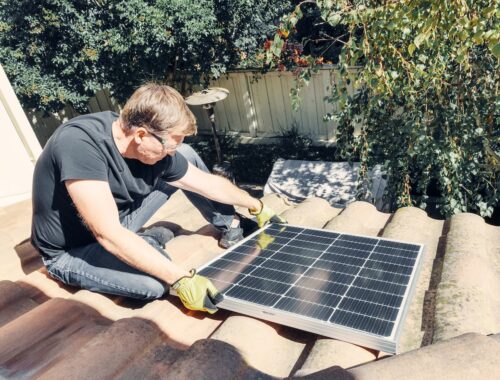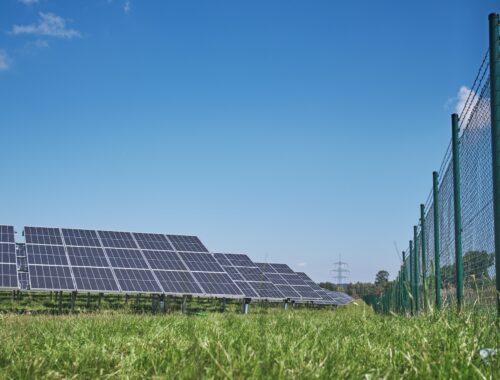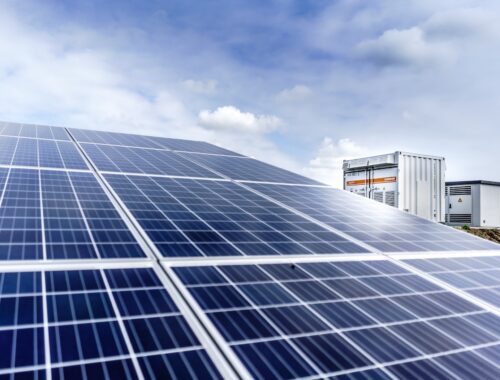
Unraveling the Meaning of 20% Efficiency on a Solar Panel
Efficiency is a crucial parameter when evaluating the performance and effectiveness of solar panels. It provides insight into how well a solar panel can convert sunlight into usable electricity. When we refer to a solar panel with 20% efficiency, it means that the panel can convert 20% of the sunlight it receives into electrical energy. In this article, we will delve into the significance of 20% efficiency on a solar panel, its implications, and how it relates to the overall performance of solar energy systems.
Understanding Solar Panel Efficiency
Solar panel efficiency refers to the percentage of sunlight that is converted into usable electricity. Efficiency is influenced by various factors, including the quality of the solar cells, the materials used, and the manufacturing processes employed. Higher efficiency panels can generate more electricity from the same amount of sunlight, making them more effective at harnessing solar energy.
When we say that a solar panel has 20% efficiency, it means that it can convert 20% of the sunlight it receives into electrical power. The remaining 80% of the sunlight is either reflected or lost as heat. It is important to note that efficiency levels can vary depending on the type of solar cell technology used, as different technologies have different inherent efficiencies.
Implications of 20% Efficiency
Power Output: Solar panels with higher efficiency can generate more power for a given area. A panel with 20% efficiency will produce more electricity than a panel with, say, 15% efficiency, assuming they receive the same amount of sunlight. This higher power output is particularly beneficial in situations where space for solar installations is limited or where maximum power generation is desired.
Cost-Effectiveness: Solar panels with higher efficiency can potentially lead to cost savings in the long run. They can produce more electricity from the same number of panels, reducing the overall system size and associated installation costs. Additionally, higher efficiency panels require fewer balance-of-system components (such as wiring and inverters) to achieve the desired power output, further enhancing cost-effectiveness.
Energy Payback Time: The energy payback time is the period required for a solar panel to generate the same amount of energy that was consumed during its manufacturing and installation. Higher efficiency panels typically have shorter energy payback times since they generate more electricity over their operational lifespan. This means that a solar panel with 20% efficiency may have a shorter energy payback time compared to a panel with lower efficiency, making it more environmentally friendly in the long term.
Space Requirements: Solar panels with higher efficiency can generate more power per unit area, allowing for greater energy production in limited space. This is particularly relevant in urban areas or installations where space is a constraint. Panels with 20% efficiency can generate more electricity per square meter, making them suitable for rooftop installations or situations where maximizing energy generation within a confined space is crucial.
Advancements in Solar Panel Efficiency
Solar panel efficiency has been steadily improving over the years, thanks to advancements in technology and manufacturing processes. Research and development efforts have focused on enhancing the performance of solar cells, exploring new materials, and optimizing the design of solar panels.
Various types of solar cell technologies are available, each with different efficiency levels. Monocrystalline silicon solar cells, known for their high efficiency, typically range from 15% to 22%. Polycrystalline silicon cells have slightly lower efficiencies, typically between 13% and 18%. Thin-film technologies, such as amorphous silicon and cadmium telluride, generally have lower efficiencies ranging from 8% to 12%.

Furthermore, improvements in manufacturing processes, such as reducing material defects and enhancing cell architectures, have contributed to increasing the overall efficiency of solar panels. As efficiency levels continue to rise, solar energy becomes an increasingly attractive and viable option for meeting our energy needs in a sustainable manner.
A solar panel with 20% efficiency signifies its ability to convert 20% of the sunlight it receives into usable electrical energy. This metric holds significant implications for power output, cost-effectiveness, energy payback time, and space requirements. Higher efficiency panels can generate more power, potentially leading to cost savings, shorter energy payback times, and the ability to maximize energy generation in limited spaces.
Advancements in solar panel technology have resulted in higher efficiency levels and continue to push the boundaries of what is possible. Monocrystalline silicon cells, polycrystalline silicon cells, and thin-film technologies all offer different efficiency ranges, and ongoing research is exploring new materials and cell architectures to further enhance efficiency.
As solar panel efficiency improves, it contributes to the widespread adoption of solar energy as a renewable and sustainable power source. Solar energy systems become more effective at harnessing the sun’s energy, reducing reliance on fossil fuels, mitigating environmental impacts, and paving the way for a cleaner and greener future.
By understanding the significance of 20% efficiency on a solar panel and its implications, we can appreciate the advancements in solar technology and recognize the potential of solar energy as a viable and efficient solution for meeting our energy demands while reducing our carbon footprint.
You May Also Like

How much solar energy can a single panel produce?
April 21, 2023
Advances in Solar Power Technology: Efficiency and Affordability
June 15, 2023

